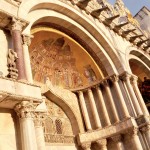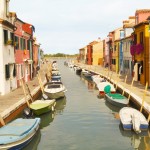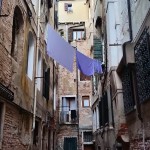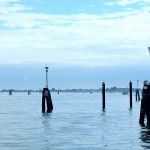
How to Visit Venice like a Pro
Written by Sophie January 5, 2016











First off, just let me say, you made the right travel choice. Venice is amazing! You won’t regret the trip. That being said there is no right or wrong way to do Venice, so long as you enjoy yourself. What we’re talking about here are all the tips, tricks, and tidbits you’ll need to make your trip to Venice memorable.
(Also, we’re talking about Venice, Italy here. If you’re looking for Venice, California, you may have made a wrong turn somewhere. You should also ask yourself why you would go to a replica in California when you could just go to Italy and see the real thing. What were you thinking?)
Before we can talk about how to do Venice though, we should probably talk about what is Venice. You see, Venice is really unusual. And I mean REALLY unusual. There’s nowhere else like it anywhere in the world. There are replicas out there (like Epcot) but they still pale in comparison to being able to explore the real thing. So here we go!
Geography:
So you know that Venice is all waterways and canals and boats, but what you didn’t know is that Venice’s main island is actually made up of 118 smaller islands all connected by canals and bridges. These islands all sit in a large marshy area that would essentially be uninhabitable except for the fact that the venetians decided they were having none of that back in the 5th Century and that they most definitely were going to make this area their home. What I’m trying to say is that Venice shouldn’t even exist. The buildings themselves aren’t even constructed on real land! All of the building actually sit on stilts that have been driven into the ground underwater. As you can imagine, living in a floating city that relies on 1500 year old wooden planks to keep it dry is causing Venice more than a few problems. Some experts give Venice less than 100 years of habitation left, so it’s a good thing you’re visiting now! Also, bring your waders.
Beyond the main island, there are even MORE islands. Many are purely residential, but some are more than worth the trip in the water taxi. Many tourists never bother to leave the epicenter of the main city and miss out on the florescent-colored houses of Burano or the sparkling Venetian glass shops on Murano.
Planes, Trains, and No Automobiles:
Because of all the water, there are no cars allowed in Venice. When you fly into Venice Marco Polo Airport (VCE), you arrive on dry land. From there you’ll have to take a train to the island (which is the part you want to see – no one goes all that way to explore the cement and glass office buildings on the mainland). There are 2 Venice train stations – the first, Venezia Mestre, is on the mainland and is the last stop before you head out over the water. This is the station you should head to after you get off the plane. From there, you want to catch a train heading toward the second station – Venezia Santa Lucia. This station is the end of the line and the only one on the main island.
So you grab your luggage and walk out of the station to discover that the first thing you see is water (and gelato, but that goes without saying). Wherever you want to go in Venice, you have a few options. You can walk, since everything is connected by bridges. That being said, give yourself a TON of time to find your way because Venice is not a grid and half of the turns lead to dead ends and steps leading disappearing into the water. There are signs posted on the side of buildings with arrows pointing you to the main attractions – San Marco’s Square, Piazza del Roma, etc. If you don’t want to walk, grab a biglietto (ticket) for the Vaporetto (water taxi). They go up and down the main canals and out to the further islands and have many different routes to choose from. It’s also worth the trip on a taxi down the Grand Canal just for the view!
Main Attractions:
Despite the fact that the main island is, ultimately, quite small, there’s still a lot to see and do and learn while you’re there so let’s start with the big stuff.
- Piazza San Marco – the epicenter of everything Venetian, San Marco’s square is what you picture when you think of Venice. It is a large open square, surrounded on 3 sides by the Basilica di San Marco, Doge’s Palace, and the Church of San Geminiano. You can also expect to find just as many pigeons there as you will tourists and there is always at least one part that is perpetually under restoration. The architecture is stunning and the view of the Basilica di San Marco’s exterior is simply marvelous. There’s also quite a few areas nearby to dine, shop, or catch the water taxi – just be aware that this is tourist trap central. Keep in mind that this area does flood, but the city is very good about setting up platforms if you don’t want to get your feet wet.
- Basilica di San Marco – Even the outside of this incredible church, which is famous for its golden murals, is stunning and can be viewed from the middle of Piazza San Marco. The inside is covered in murals and mosaics and is just as ornate and intriguing as any cathedral you might find in Italy.
- Rialto Bridge – This bridge is the oldest in Venice spanning the Grand Canal. You might have to elbow your way to the edge, but once you get there, you’ll definitely want to take a picture. It is the quintessential Venetian photo-op. It’s easy to find from the train station and is on a main thoroughfare, which also means that tourists and locals alike will cross this bridge on a daily basis. What I’m getting at is, it’ll be crowded, but don’t let that dampen your experience. As of Fall 2015, a majority of the bridge was under-construction, so you might not have the perfect photo of the bridge, but the view from the bridge is still more than worth it.
- Grand Canal – The widest, longest, and busiest (by a long shot) of all the canals in Venice. It is essentially Venice’s main street. The buildings that line this canal are ancient and covered in traditional Venetian architecture. Take a water taxi down to Piazza San Marco and be sure to enjoy every second of the trip.
- Carnevale – Ok, so this one is an event, not a physical landmark, but it might as well be. Carnevale is celebrated all over Europe and the world and is basically a last hurrah before the Catholic holiday of Lent kicks in. That being said, when you think of Carnevale you probably think of Venice and for good reason – no one does it like Venice. No matter what time of year you visit Venice, you’ll find shops selling Venetian carnevale masks and ornate costumes. If you are fortunate enough to visit during the actual thing, well… you’ll just have to experience it for yourself.
If you want to see everything, you might also consider getting a Rolling Venice Card which includes admission to many of the museums and churches in Venice and gives you unlimited access to public transportation (aka water taxis). Just know that this pass is exclusive for those under age 30 and is perfect for students studying abroad.
Last Minute Tips & Tricks:
As with any new country or culture, there are certain customs, tourist traps, and things to know before taking the plunge.
- Restaurants – Before you sit down to eat anywhere in Venice, check the menu for additional charges. These could include fees for water, service charge, table fees, etc. (In case you’re wondering what a table fee is, that’s where they charge you just for sitting at their table. This gets expensive if you’re just ordering an espresso.) Translated menus with pictures of each dish will also indicate that this restaurant is used to serving and catering to tourists. My personal experience is that most restaurants in Venice now offers basic English translations on their menus, even the hidden ones. That being said, the best food is going to be at the little places off the main drag. Their more likely to serve authentic Venetian food and less likely to overcharge you for mediocre spaghetti. Speaking of traditional foods, be sure to try the seafood while you’re there since it is a Venetian specialty! And just so you know, Italian menus are gigantic because meals traditionally involve 3+ courses, but you don’t have to order 3 full courses every time. If you’re not hungry, it is completely fine to order a single pasta dish and a glass of wine.
- Walking – Wear comfortable walking shoes! Ladies – this does not include flats or flip-flops (I mean it!). My first day in Venice, I walked 10.5 miles. My second morning, I walked 10 miles, even though I spent most of my time on a water taxi and left the island by 2pm. Wear shoes with good arch support and cushion.
- Sleeping Arrangements – It’s definitely worth it to stay at least one night on the main island. I know hotels and hostels can be expensive, but that’s what the internet is for! My favorite trip to Venice involved a surprisingly affordable Airbnb in the northern part of the island. It was a primarily residential area, no other tourists around and incredibly relaxing. The few restaurants nearby were almost 100% frequented by locals. We even caught a glimpse of a youth soccer game! Plus, seeing Venice at night when everyone has left the island for their hotels on the mainland is incredibly worth it.
- Timing things – Leave yourself more time than you think you’ll need to get anywhere, especially if that anywhere happens to be a train you can’t miss. And when I mean more time than you think, I mean WAY more time. Water taxis can be very crowded and will stop frequently. If you’re walking, you won’t know where you’re going, even if you have a map, so give yourself time to make a few wrong turns.
The best way to see Venice is to just see it. Pick an alleyway and walk until you don’t know where you are. You will get lost no matter what, so don’t forget to enjoy it.













